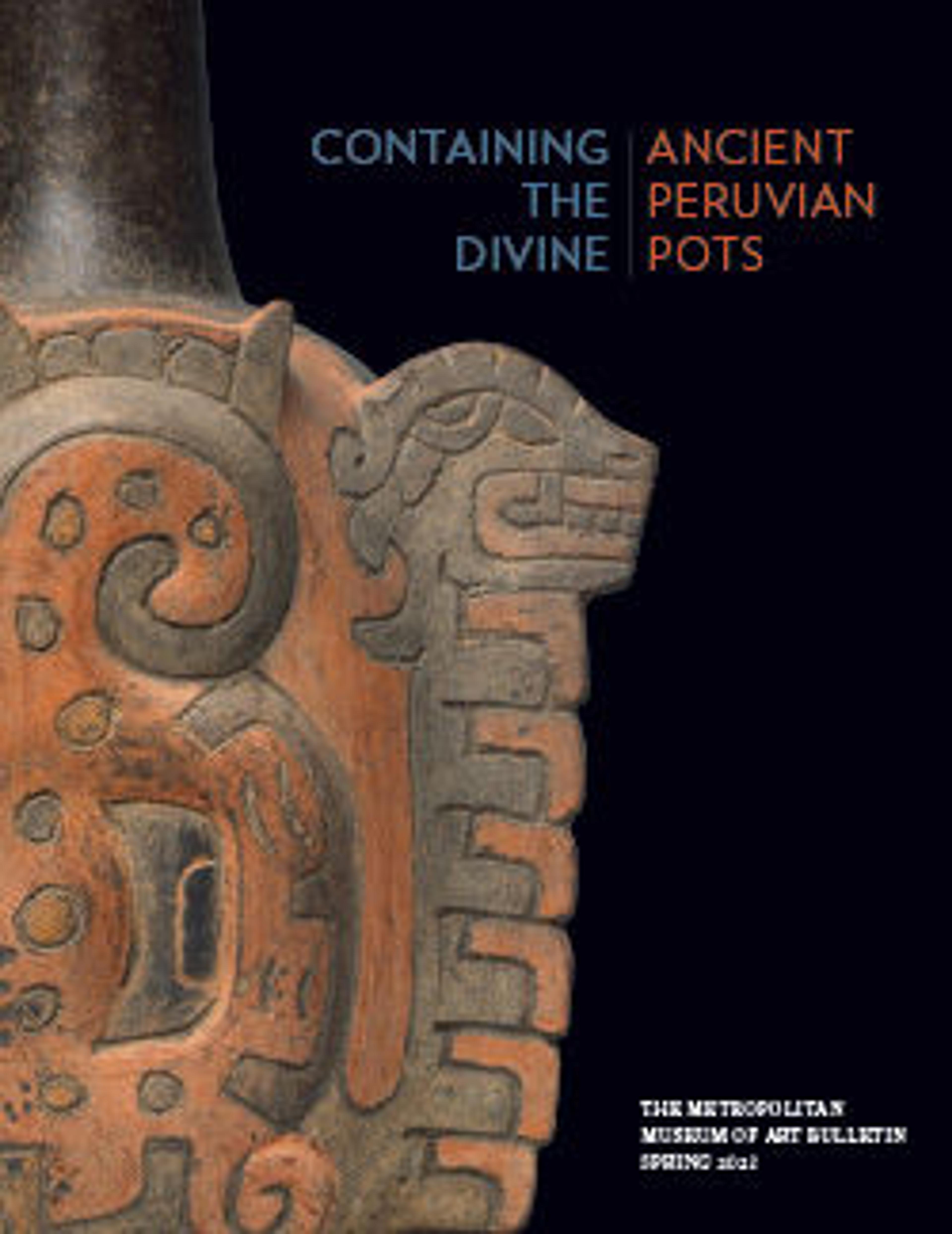Double bowl
During Inca times, the production and distribution of ceramics was controlled by the state. Those made and used in Cuzco, the capital of the Inca empire, and its vicinity are known as Cuzco Inca style. Characterized by superb craftsmanship, these ceramics show a limited range of distinctive forms and designs but some unique and exceptionally appealing and creative shapes; the present example falls into that category. The shallow, slightly incurved bowl sits on three short supports; it has a smaller bowl inside. Two long-necked animals, a llama and a bird, are attached on one side and connected to the inner and outer bowls respectively; they serve as pouring spouts. The slender, spotted body of a third animal, probably a feline, is draped over part of the top of the larger bowl, its paws gripping the rim. The vessel is slip-painted in black and red over buff; around the outer wall is a segmented band depicting insects.
The vessel probably served as a paccha, or ceremonial vessel used for pouring libations such as chicha (maize beer) on the earth to ensure fertility and growth of plentiful crops. The animals depicted may refer to the diverse environmental regions of the Inca empire: the long-necked seabird may symbolize the ocean in the west, the llama the high Andes mountains in the center, and the feline the rainforest in the east.
The vessel probably served as a paccha, or ceremonial vessel used for pouring libations such as chicha (maize beer) on the earth to ensure fertility and growth of plentiful crops. The animals depicted may refer to the diverse environmental regions of the Inca empire: the long-necked seabird may symbolize the ocean in the west, the llama the high Andes mountains in the center, and the feline the rainforest in the east.
Artwork Details
- Title: Double bowl
- Artist: Inca artist(s)
- Date: 1400–1535 CE
- Geography: Peru
- Culture: Inca
- Medium: Ceramic, slip
- Dimensions: H. 3 5/8 × W. 5 1/4 × D. 7 1/8 in. (9.2 × 13.3 × 18.1 cm)
- Classification: Ceramics-Containers
- Credit Line: The Michael C. Rockefeller Memorial Collection, Bequest of Nelson A. Rockefeller, 1979
- Object Number: 1979.206.1149
- Curatorial Department: The Michael C. Rockefeller Wing
More Artwork
Research Resources
The Met provides unparalleled resources for research and welcomes an international community of students and scholars. The Met's Open Access API is where creators and researchers can connect to the The Met collection. Open Access data and public domain images are available for unrestricted commercial and noncommercial use without permission or fee.
To request images under copyright and other restrictions, please use this Image Request form.
Feedback
We continue to research and examine historical and cultural context for objects in The Met collection. If you have comments or questions about this object record, please contact us using the form below. The Museum looks forward to receiving your comments.
